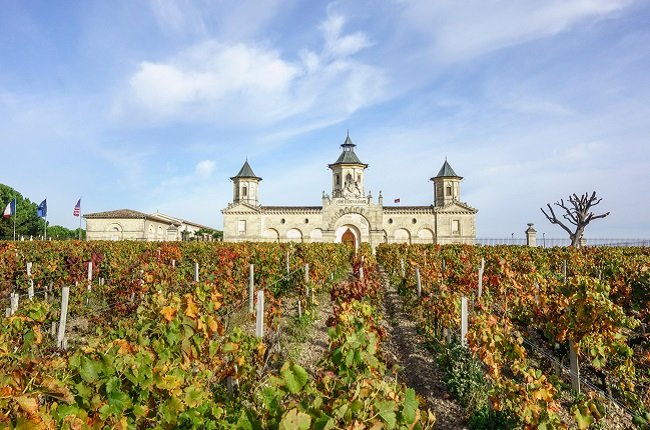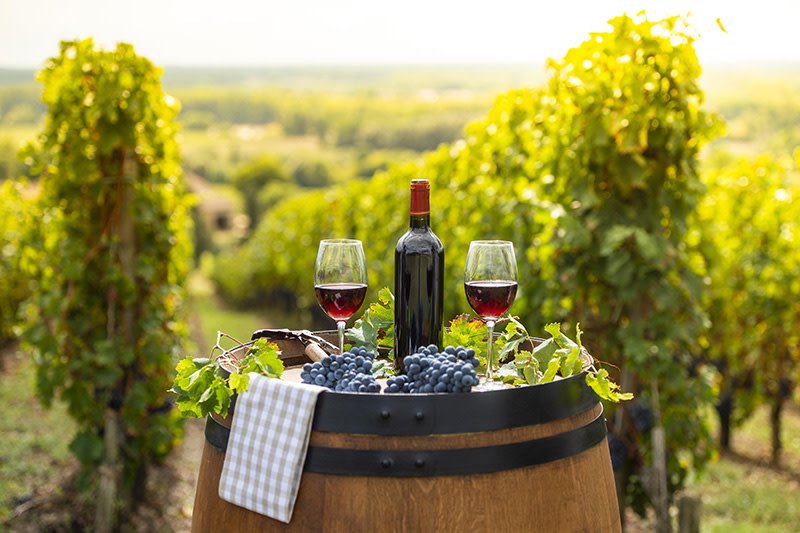The Timeless Allure of Bordeaux Wines
An Interview with Webb’s Head of Fine Wines & Whiskies, Marcus Atkinson
Whoever coined the term ‘to age like fine wine’ would likely have been a fan of a drop from the Bordeaux region.
With a complexity and lushness that deepens with the passing of time, Bordeaux wines are revered for their history, which dates back to the 1st century CE, and their exceptional maturation and cellaring potential. At Webb’s we are seeing an ever-increasing interest and demand for wines from this iconic region. We sat down with Marcus Atkinson, Head of Fine Wines & Whiskies and huge Bordeaux fan, to find out what makes them so drinkable and so collectible.
So firstly, Marcus — beyond the region itself, what ‘makes’ a Bordeaux?
Bordeaux actually embraces a diverse range of styles, from vibrant dry and sticky whites to structured reds, however it is the latter that is typically being referred to when people mention “Bordeaux”.
The key characteristics of red Bordeaux wines — beyond the region itself, which defines the ‘terroir’ of Bordeaux — are typically medium to full-bodied wines with good structure. They can range from elegant, finely- honed, red-fruit spectrum wines from St Emilion and Margaux, to opulent rich black-fruit power houses from Pomerol and Pauillac.
Aging potential is a hallmark of Bordeaux wines, owing to the high level of tannins and acidity. With careful storage, these wines mature gracefully over decades, gaining depth and complexity; the greatest examples should out-live everyone alive today.
Bordeaux has long been considered something of a pinnacle collector wine. What is it that allows it to maintain its grip on wine lover imaginations?
It comes down to a number of factors, particularly the history and romance of a region that was controlled by the British for many years, and also its relation to the cuisine of France. Wines produced in Bordeaux match the classic European diet with the tannins and acidity suited to high protein and at dishes. Whenever I cook a steak or enjoy a roast lamb dinner, in my mind the only companion is Bordeaux or a Bordeaux-style wine. While some are scarce, the production in Bordeaux is far greater in volume than say Burgundy.
What are some of the big names in terms of collector demand?
The long-established classification system, the Bordeaux Wine Official Classification of 1855, is still relevant today for the ‘left bank’ and the five ‘First Growth’ Chateaux; Margaux, Haut Brion, Latour, Lafite and Mouton Rothschild (who were elevated in 1973) are still the most popular at auction. From Pomerol, smaller producers such as Le Pin, Petrus and Vieux Chateau Certan command some of the highest prices due to scarcity.
Does high end Bordeaux by nature have to come from a heritage chateaux, or are there younger names stirring interest too?
There has been a recent emergence of ‘Garagiste’ wines — made in tiny quantities by winemakers often involved with the heritage estates. These have been extremely well received by wine critics and often score higher than the associated chateaux where those winemakers work.
What advice do you have for someone looking to get started in the world of Bordeaux collecting?
Look out for the best vintages such as 2000, 2005, 2009, 2010, and 2016, and taste the different regions at similar price points to decide which style suits you. Also, buy in volume as you can then taste the wines as they progress, tasting each every few years. This can also repay you handsomely if you do decide to sell later to refresh your cellar, often covering the cost of the bottles that you have already finished.
What have been some exciting sales of Bordeaux recently?
In March we achieved $23,505 for a case of 1998 Chateau Lafite Rothschild which had sold in December 2022 for $19,669, a great result. Some other exciting older vintages have been coming to market of late including some extraordinary bottles from the 1947 vintage!
Being our resident Bordeaux expert, you must have some memorable drinking moments?
My most memorable tasting was in 2001 at Chateau Mouton Rothschild, where I was lucky enough to taste the 100-point, 2000 vintage of Mouton from barrel. The still unfinished wine was incredibly powerful and tannic but it proved the undoubted truth that a great wine tastes amazing at any stage of its life. I get goosebumps every time I remember that moment.
Finally, how does one best enjoy a classic Bordeaux red?
Whenever I am about to taste a great bottle of aged Bordeaux, I have a ritual: Stand the bottle for a day or up to a week ahead of opening at serving temperature (18oC) to allow the sediment to settle. Depending on the age of the bottle, open it 2-6 hours ahead of the meal (six hours for younger, two for older), then taste a small pour so that the level of the wine is just below the shoulder at the widest point of the bottle, checking the wine is in good condition. Serve with a rare-as-you-dare steak with a good fat content, alongside sautéed potatoes and green beans — all of course buttered, garlicky and well- seasoned. Pour small volumes as you descend through the levels of the wine in the bottle and experience the wonder and awe as the wine transforms and evolves before you. Often, sadly, the last pour is the greatest, if a little thick with sediment.
(12) 1998 Chateau Lafite Rothschild, Pauillac [RP96] (OWC) Price Achieved $23,505
View all articles & videos here, or click below for the previous article






